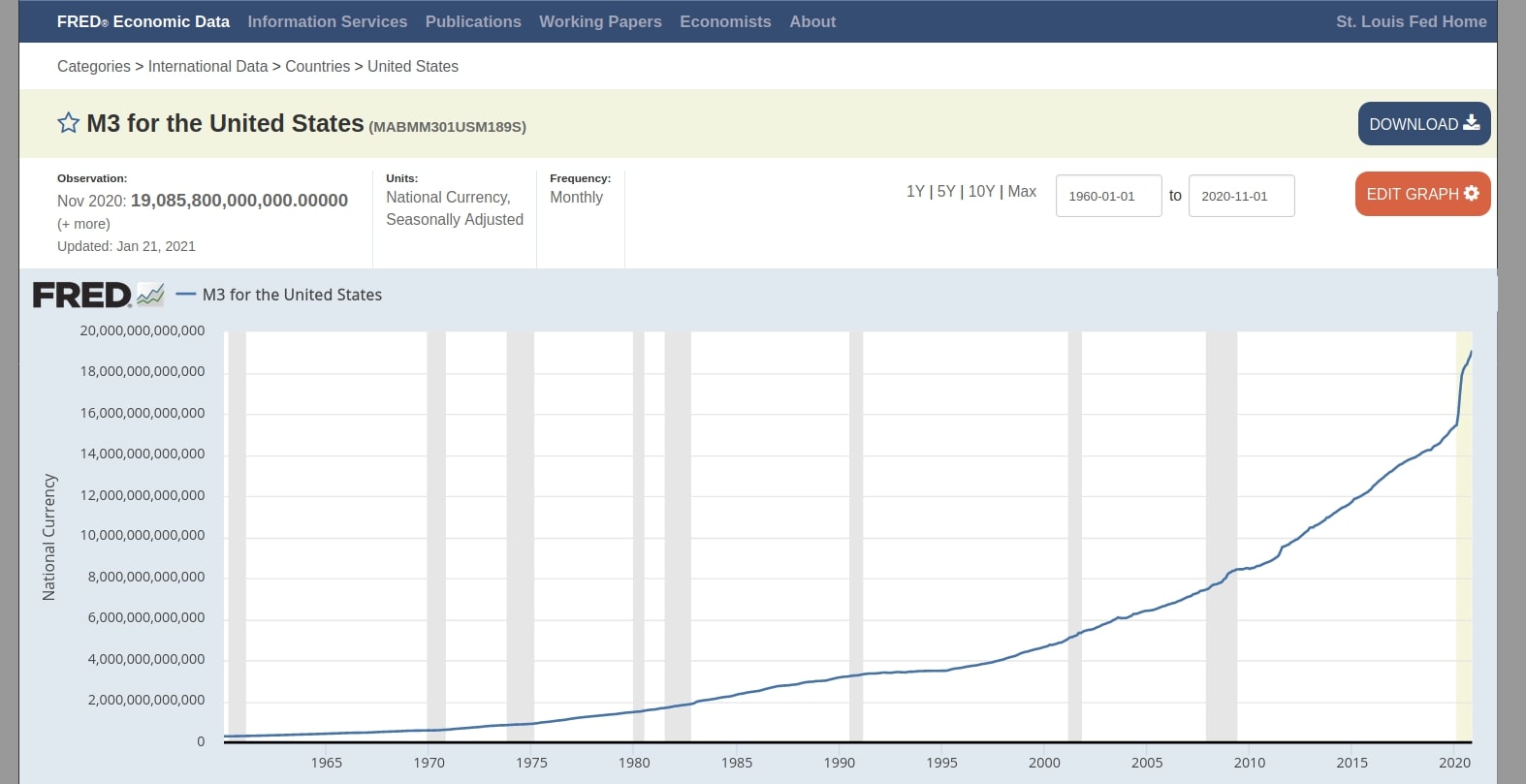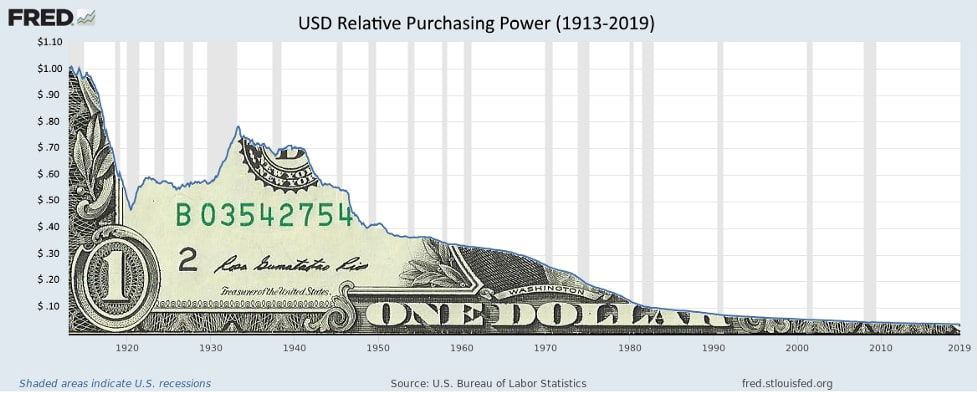It’s been about 1 year since the lockdowns began, and the world is slowly opening up. Some people are wondering, “When will things get back to normal?” – and the answer is never.
Whatever “normal” was, is now gone because the fundamentals of the world have changed. The lockdowns were a 10x change to the world’s economic and social systems (to a large extent, these changes were already happening, but the lockdown has accelerated them by 5-10 years).
Big Structural and Fundamental Changes to the World (and Predictions for the Future)
1. Change in Purchasing Habits (Offline to Online)
The lockdown forced almost everyone to start making some purchases online. Many people who were wary of online purchases are now comfortable with them and even when the lockdowns open up fully, they will continue to make at least some of their purchases online.
This has actually opened up new markets, as many new segments of people (such as old people) have made their first online transactions and will continue to buy online.
Likewise, during the lockdown, many people bought services online that they earlier felt could only be done in person.
The easiest example is medical consulting. People had to hire doctors online for general problems (stomach aches, diarrhea, etc.) to avoid COVID infection risk. Many of them will continue to do so, and it will continue to grow as it provides a similar service at a cheaper rate.
For example, take Practo.com – a platform for buying video consultations with doctors. Here are some excerpts for their post and report:
Practo health plans have grown by over 250% in the last six months.
While most of the health plan users are from metro cities like Delhi, Bangalore, and Mumbai, there has been a growth of 30x in the number of users from non-metro cities like Jaipur, Ahmedabad, and Lucknow.
Millennials account for 60% of the health plan users, the majority of whom consult for the elders in the family.
The second most active user group include those who have chronic health conditions and those who live in remote locations.
Men and women user split stands at 75% vs 25% respectively.
Out of all the users, 50% of users are new/first time users of telemedicine health plans.
What does this mean?
- They are growing fast and have lots of new users, fueled by the lockdown and the pandemic panic.
- Many of their users are either old people buying general consulting or people in non-metro cities where specialists are hard to come by. (Earlier, in smaller towns, people would have to drive to the city hospital in case they needed the opinion of a specialist.) This means the majority of them are likely to continue using online services, pandemic or no pandemic.
- The biggest spenders on medical services are women because they live longer and they have more delicate bodies (plus pregnancy and baby care-related questions, etc.). But women are only 25% of their current user base. This is easy growth for them as eventually the men will marry and introduce their wives to their service.
In other words, online medical consulting will likely “become a thing,” just like online shopping for books is today. And this is just one example.
Another example is people buying groceries online from Amazon Pantry. Why would you go back to shopping for groceries at the mall when you can get the same stuff at a cheaper price delivered to your house (save both time and money and minimize infection risk)?
Overall, these changes in purchasing habits mean brick and mortar, which was already on the decline in the past decade, will never bounce back fully.
2. Working from Home (WFH)
As I predicted, WFH is here to stay. This was bound to happen because it’s so much cheaper than paying for office rent and related utilities (electricity, water, maintenance, etc.) and leads to fewer bloat employees (middle manager types who add little to productivity). It also allows businesses to hire talent from all over the world at lower prices.
Knowledge workers also prefer WFH as they’re able to produce the same output. They can save commute time that can be spent with friends and family (not to mention the hassle of getting ready for work in the morning and returning home tired from a long commute is avoided). They also make more money as they have a bigger/global pool of potential employers.
The first big resistance to WFH are old managers in traditional businesses (since they are resistant to change and think that “if I don’t see you work, how will I know you’re working”) and older (bloat) employees who don’t add enough real value to justify their salaries, so they need to “show up to work” to make themselves appear useful.
These people will eventually come around as the invisible hand of free-market economics makes it harder for them to stay competitive with all the extra fixed costs they are bearing.
The second big resistance is employees who find themselves working day and night as there is no “divide between home and office”.
This is happening because of the bad job market at the moment. Once conditions improve and there is more job mobility, people will draw harder boundaries and have fixed working hours.
All in all, work from home is here to stay. Many corporations are already telling employees that they’re permanently working from home and have already surrendered quite a bit of their office space.
Instead of renting 5 floors of space and giving everyone a fixed desk, they now have only 2 floors and hotdesks.
Many companies that hire knowledge workers have already announced permanent work-from-home for many of its positions, for example, Spotify, Microsoft, Coinbase, Twitter, etc.
This trend will grow simply because it’s more practical (at the very least, we will see partial work from home, i.e., 2 days office and 3 days WFH in most places). The workspace will never get back to “normal,” i.e., how things were in 2019.
WFH is a change that is equivalent to the introduction of computers in corporate workplaces. It starts slowly with only a few high-level people having access to them, to a point where almost every corporate employee uses them.
3. Cryptocurrencies
Crypto has been around for over 10 years now and has gained a lot of traction – especially now that the US government has decided to hold interest rates at 0% and print virtually unlimited amounts of money.
The basic idea of Bitcoin is using cryptographic proof to solve the double-spending problem, thus allowing people to transfer ownership of digital tokens (or coins) without retaining a copy. (I.e., if you send someone a file, you both have a copy of the file. You send someone a bitcoin, you lose the bitcoin, and they get it.)
This enables people to assign a value to the coin and use it as a permissionless medium of exchange. When you transact in a fiat currency, you need to go through intermediaries (like banks) – crypto allows you direct, irreversible, almost instant transactions with no permission necessary from intermediaries.
Further, because of the limited supply (only 21 million Bitcoin) and no way for a government to manufacture more out of thin air, it does not deflate perpetually like fiat.
In 1970, 1 Kg of gold would cost about $1,100. In 2020, you could have paid as much as $66,000 for the same 1 Kg of gold. This means that over 50 years, the value of a dollar has fallen by about 98.33%.
You don’t notice it because it happens very gradually. The rate at which the dollar lost value (relative to gold) in the above calculation is about 7.85% per year.
If you take official government inflation data, $1 in 1970 is worth $6.74 in 2021 money. This means, according to official data, USD has lost 85% of its purchasing power in 50 years. (This is why saving and holding cash is a bad idea.)
The big reason behind this fall in the value of money is ungodly amounts of currency printing.


This has been happening across the world with all fiat currencies, not just the USA.
Cryptocurrencies are a good solution to this problem since they take away control of the money printer from the government and create a digital equivalent of gold (valuable because of limited supply) that can be used to transact P2P and almost instantly (and does not come with purity related trust issues that gold does).
Crypto is being adopted quickly worldwide, including by fiat payment processing/facilitating companies like PayPal, MasterCard, Visa, Apple Pay, etc.
At this point, anyone who thinks “bitcoin is a scam” or “bitcoin is tulips” is a complete idiot (or just old and behind the times) – just smile and agree with them, and dollar cost average every week. (Not financial advice.)
There is a good chance that crypto will significantly replace fiat (and its related structures, especially the banking system – read about DeFi) over the coming years and decades, which changes the world very significantly.
P.S. The people who think that crypto will “fail” because “governments will ban it” don’t understand the technology. The government can only ban official exchanges – but it cannot stop the blocks from being mined and transactions from happening.
4. Sovereign Individual
A combination of WFH and Cryptocurrencies give birth to the first real sovereign individuals. (Crypto is not necessary for this, but it does make moving wealth internationally much easier.)
People will be able to work from anywhere, earn in globally accepted cryptocurrencies (already picking steam), and will no longer be subject to government.
This trend was already happening; the lockdowns just accelerated it by 5 to 10 years.
To give you an example, let’s say you live in State A. State A just decided to increase its income taxes by 10%. You don’t like this. What do you do? You move to State B since you can work from anywhere.
This has already been happening.
Ever since lockdowns have made working from home common, people have been moving out of high-cost high tax regions to low-cost, low tax regions.
Take the California Exodus, for example. Businesses and people are moving from California (a state with high regulations and taxes) to Texas (lower regulations and lower taxes). The same thing is happening with New York and other states.
What does this mean?
This means that governments will have to incentivize rich and intelligent people and entrepreneurs to stay in their territory in the future.
Why would I start a business in a place with high taxes and high costs when I can do so at a low tax, low regulation, and low-cost location since I’m going to be delivering the product/service and hire people remotely? (Think SaaS, consulting online, etc.)
If this sounds far-fetched to you, you haven’t been paying attention. This is already happening.
Tech companies like Apple already incorporate themselves in tax havens like Ireland because it allows them to operate in high-tax countries like the USA without paying the taxes.
What working from home allows is to scale this to the individual.
Why will anyone choose to live in a high tax, high-cost area when they can just as well move to a low tax, low-cost area and enjoy a similar if not better quality of life?
Of course, there are other factors than just costs and taxes, like weather, language, cuisine, etc. – but the point is, governments will have to compete for rich/entrepreneurial/highly productive citizens instead of the other way around.
Not everyone will be a sovereign individual, only the top few percentage points. Ultra-rich people, entrepreneurs, and knowledge workers. But these are the people creating all the wealth and who pay most of the taxes.
As a government, you now have to prove why you are worthy of humanity’s best to live in your region.
Do you have the best weather, the best regulations, the best tax structure, the most freedom, the best infrastructure – why should a free, sovereign individual live in your jurisdiction?
Of course, like any other long-term structural change, it will take many years for these changes to pan out completely. But – things will move forward in these directions.
In other words, the past is gone. The “normal” that we had pre-lockdown is never coming back. This is the dawn of a new era, just like how everything was different after the industrial revolution.
– Harsh Strongman









































